The Mountain Everest Max Mechanical Keyboard Review: Reaching New Heights in Build Quality
by E. Fylladitakis on November 17, 2021 10:45 AM EST- Posted in
- Peripherals
- Cherry MX
- Mechanical Keyboards
- Mountain

Mountain is a newcomer in the PC peripherals industry. The German-based company started out a couple of years ago, kicking off their business with just a single mouse model. More recently, last year the company made a bold move by putting up their first (and rather unusual keyboard) for crowdfunding. Of course, the bold move was not the crowdfunding itself – this is a tactic that many companies result in nowadays, especially when they want to weigh an uncertain market demand – rather, it was the modular nature of the keyboard.
That keyboard became the Everest. Designed with maximum customizability in mind thanks to its modular parts, the Everest has been built to compete as a top-tier mechanical keyboard, with all of the many advanced features come with the territory. And, as we'll see in our review, Mountain didn't just go for feature parity – to produce a keyboard as good as the best keyboards on the market. Instead they've seemingly gone one better, constructing one of the best built keyboards we have ever seen at AnandTech.
Ultimately, Mountain's engineering efforts have led to two different Everest products. With the modularity of their design serving as the marquee feature for the Everest, the flagship product for the keyboard lineup is the Everest Max, which is what we're reviewing today. The Everest Max is the whole kit and caboodle, as it were, offering the base tenkeyless keyboard as well as all of Mountain's additional modular components. Meanwhile, for those who only need a tenkeyless board without the modular frills – and with a lower price tag – Mountain also offers the Everest Core, which true to its name, only includes the base keyboard.
Packaging and Bundle
We received the Mountain Everest Max in a very cleverly designed cardboard box. The artwork on the box itself is minimal but it reveals tons of information once opened, and designed in such a way that will catch the eye of the user that opens it. It also provides outstanding shipping protection to the keyboard and its components. Every component comes into its own cardboard box, neatly packed inside a drawer underneath the compartment where the core of the keyboard sits.
As we received the Max version of the Everest, we also received all of its modular parts available to this date. These are but two – a Numpad and a media dock. The company also includes tilt adjustment feet, a normal Esc keycap, five testing Cherry MX switches, a quick start guide, a few stickers, and a USB cable. The USB cable is removable and it has a Type-C connector on the keyboard’s side and a USB Type-A connector on the PC side. Mountain also includes a Type-C adapter, for those wishing to attach the Everest Max directly to a Type-C host port.
The Max version also benefits from the inclusion of a high-quality, magnetic palm rest. It is cushioned and extremely soft to the touch. The magnetic grip on the keyboard is very light, perhaps too light, which can be a good or bad thing depending on how forceful users are with their wrists. The light magnetic force allows for it to be very easily removed and cleaned, without even having to move the keyboard a tiny bit – but this also means it can be unwittingly moved during a heated gaming session.
The Mountain Everest Max Mechanical Keyboard
The Core of the Everest keyboard is not unlike most tenkeyless mechanical keyboards out in the market. If not for the subtle company logo at the top of the chassis and the silver Esc keycap, it would be difficult for most people to differentiate the Everest from other tenkeyless keyboards in the market.
We received the US/International version of the keyboard. It has a typical ANSI layout, with seven 1.25x keys at the bottom row plus a full-size 6.25x Space Bar key. Mountain is using a clean, rounded fond on the keycaps. The standard keycaps are made from ABS but Mountain offers an upgrade to double-shot PBT keycaps for roughly $30 more. There are no extra buttons on the Core of the keyboard.
The top of the keyboard is made out of aluminum, with a straight brushed surround and a circularly brushed top. This creates an eye-catching visual effect but some users may find it unappealing, as it does look like someone went crazy with a wire brush on it.
The included palm rest matches the Core keyboard perfectly and is very comfortable to use. However, once the Numpad is attached, the palm rest does look aesthetically out of place. It is not necessarily uncomfortable as most people do not rest their wrists over the Numpad but it is making it seem as if the Numpad is a foreign body to the rest of the keyboard.
Once all of the modular components are installed, the Everest Max ceases to be a simple tenkeyless keyboard and its true potential can be clearly seen. The numpad has four mini-screen keys on top of it, and the media dock has an LCD with a rotating dial alongside the small media control buttons and tiny informative LEDs.
Users can configure the four display keys on the Numpad and the rotating dial LCD on the media dock via the keyboard’s software. It would not be an exaggeration to say that most (if not all) of the Everest’s advanced features reside on the modular parts.
The bottom part of the keyboard is plastic, with three wide anti-slip strips and two circular tilt feet. There are many pathways to cleanly route the cable out of the keyboard’s connector at the center, including towards the front side of the keyboard.
At the rear of the keyboard, we find two connectors, one Type-C connector, and one Type-A connector. The Type-A connector works just like a normal hub port and users can connect any USB device to it. The Type-C connector is meant as an attachment point for the media dock. Two more Type-C connectors can be found on either side of the keyboard, which are meant for the numeric pad.
Underneath the keycaps of our sample, we found original Cherry MX Red switches. Mountain offers the Everest with either Cherry MX Red, Blue, or Brown switches. This is one of the very few keyboards in existence with original Cherry MX switches that are hot-swappable, allowing the user to change the switches of the keyboard at will. The switches are the RGB variants of course, with clear bodies. Mountain is using typical Cherry MX cross-type supports for the larger keys.
The RGB lighting on the Everest Max is crisp and clear, yet not too strong. It is strong enough, especially for those who are going to use the keyboard in relatively dark rooms, but we have seen stronger backlighting with the same Cherry MX switches in the past. It is possible that this may be but an illusion, as the very dark surface of the keyboard absorbs nearly all light, negating any backlight bleed.
Opening the keyboard up reveals another surprise, as we found an exceptionally well-designed and assembled device, going beyond even what we usually see even on top-tier products. This might be the first keyboard that we have seen the manufacturer using gap-filling foam material to soundproof and enhance the assembly mechanically. There may be a downside here though, as the material may trap moisture if someone spills a lot of liquid on the keyboard.
The heart of the Everest is a Holtek HT32F52352 ARM processor. This is a 32-bit microcontroller with a 48 MHz operating frequency and 16 kB embedded SRAM. It is quite a bit of an overkill for a keyboard, yet it is always good to see some overkill on such top-tier performance devices.


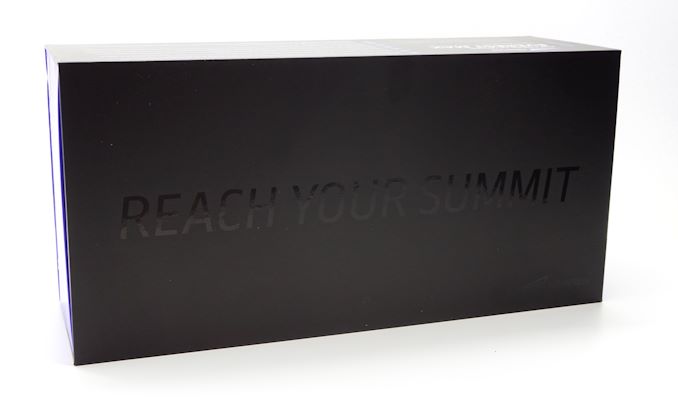
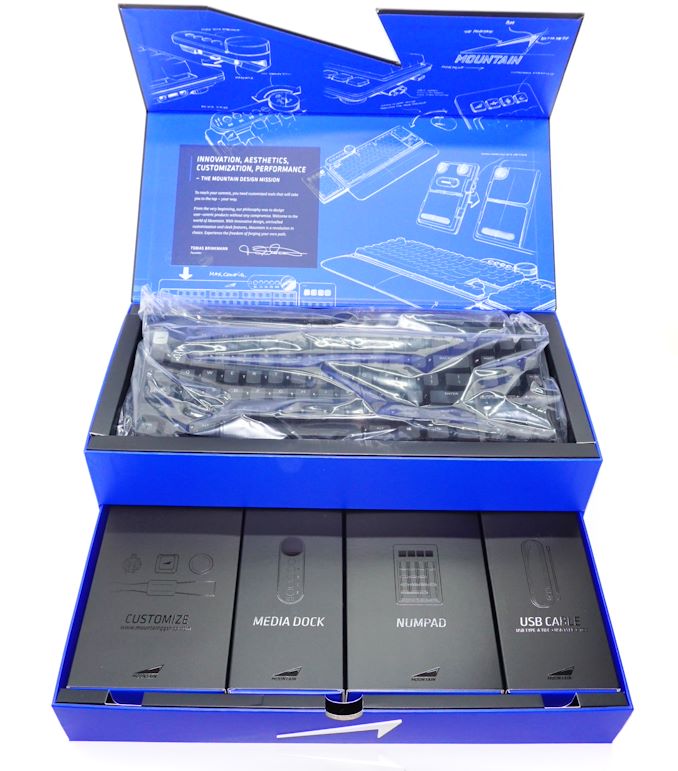
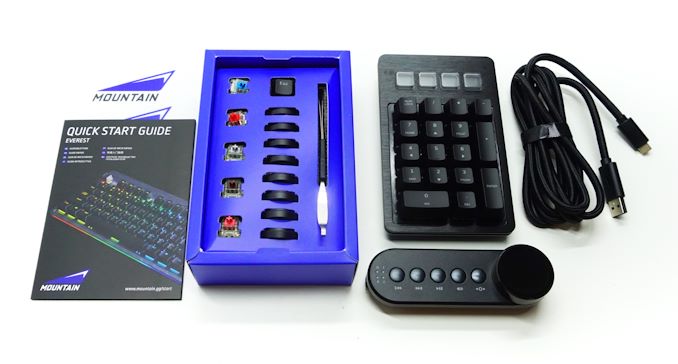

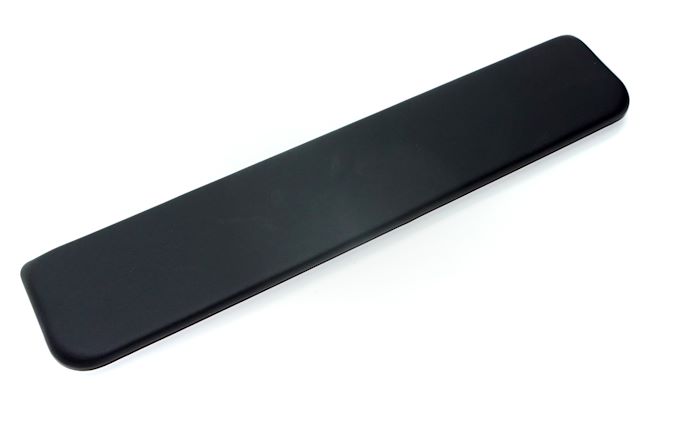
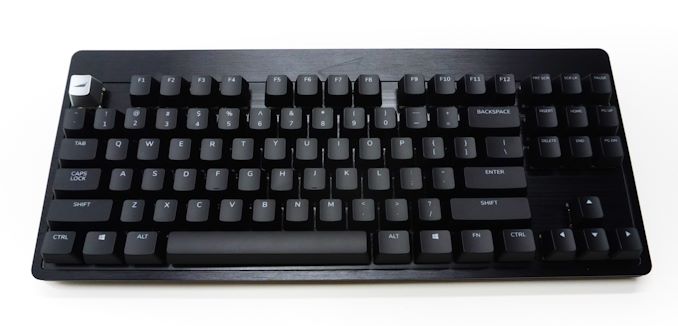
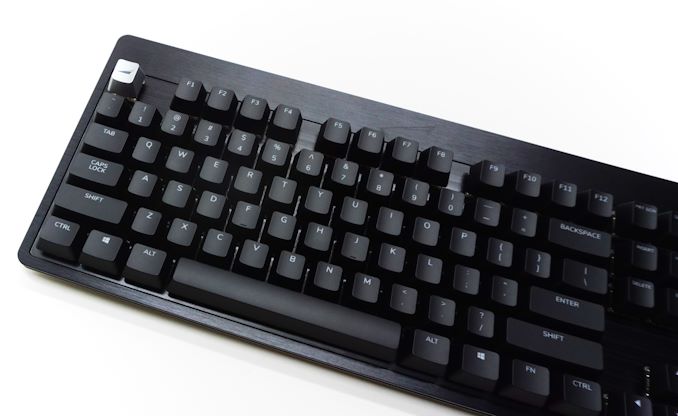
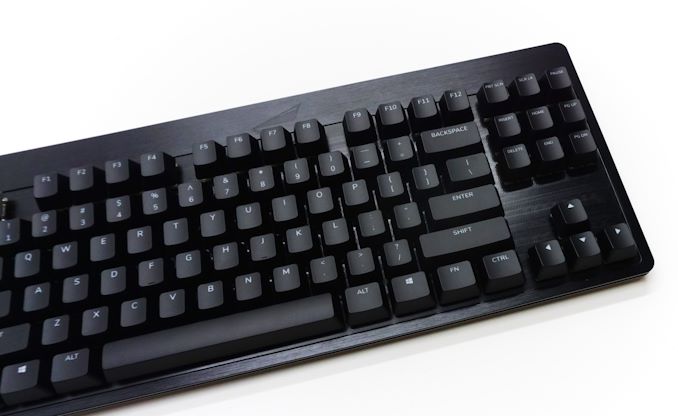
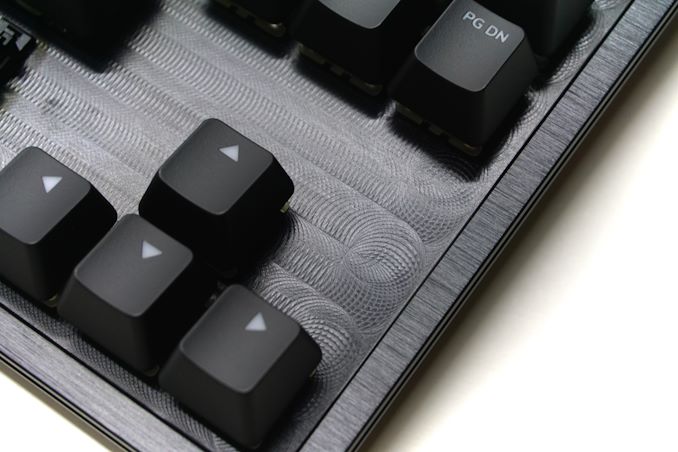
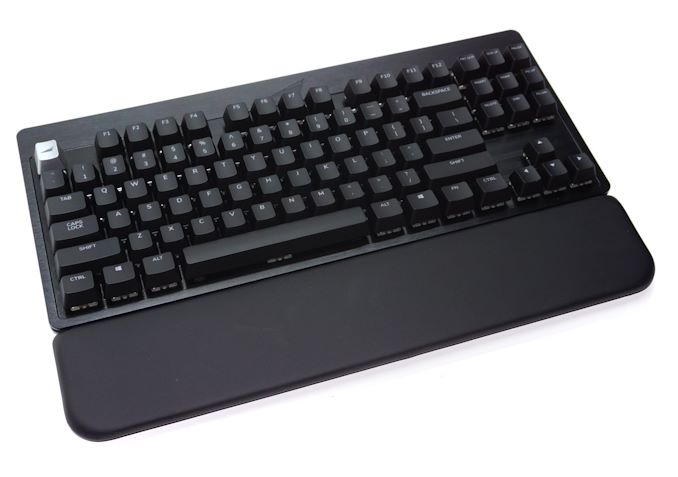
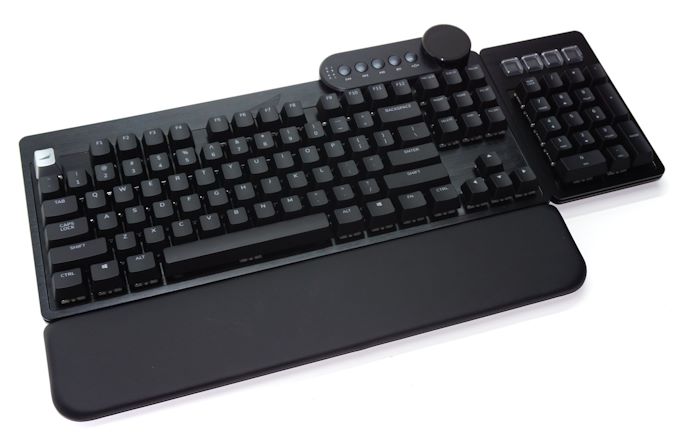
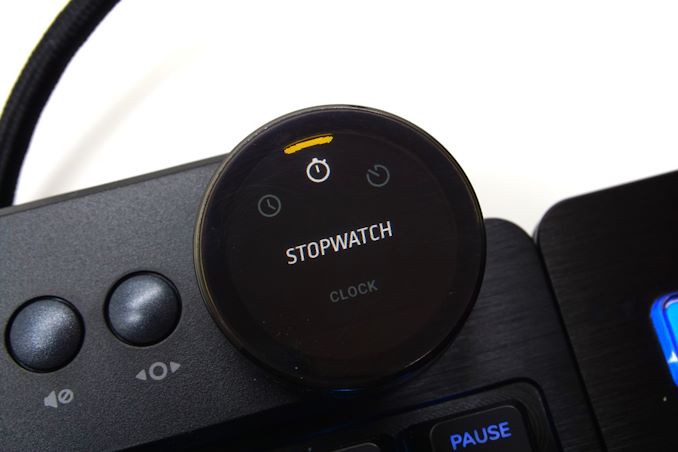

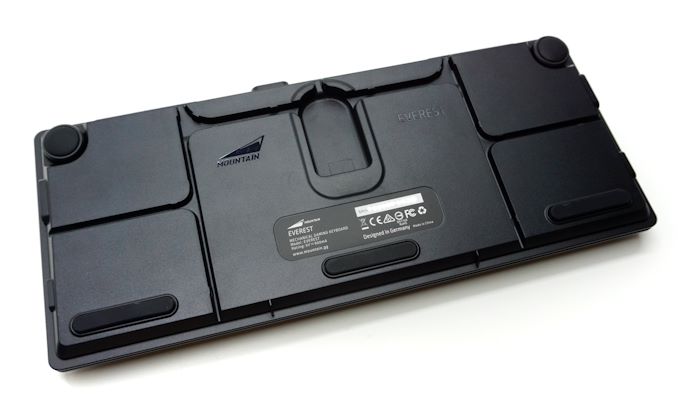
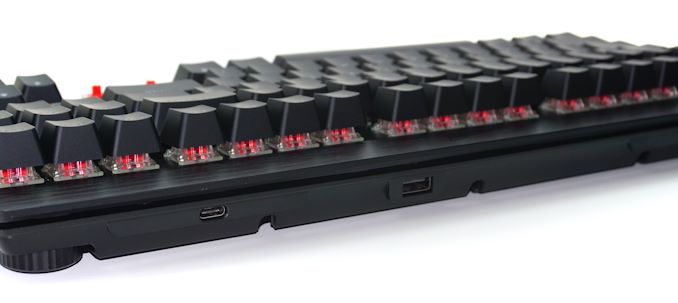


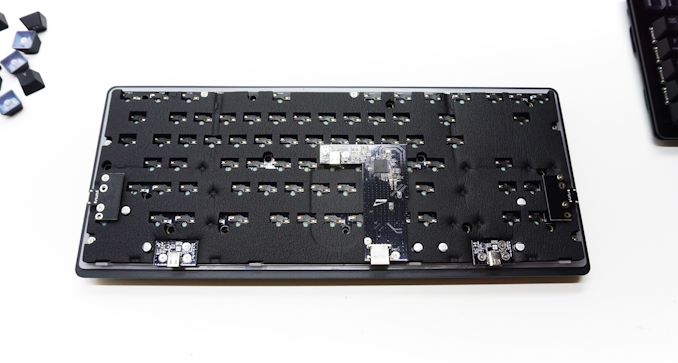









54 Comments
View All Comments
meacupla - Wednesday, November 17, 2021 - link
I offer a counter argument for the price of this keyboard.The only other keyboard in production, with a numpad you can place on the left, is Asus Claymore 2. Arguably, Asus Claymore 2 has wireless, but you get more customization and functionality with Everest Max.
$200 could even be a bargain, compared to top end keyboards from Logitech, Corsair, and Razer.
(although, if you ask me, those top end keyboards from Logitech, Corsair, and Razer, are way overpriced anyways)
Software that works, as in it's fully functional, and not in alpha or beta, is also a huge selling point compared to other manufacturers of mechanical keyboards.
philehidiot - Friday, November 19, 2021 - link
I'm in the market for a new keyboard as my 2013 Razor model with Cherry blues is starting to fail. Having seen the price tag of $200 I was going "oooh, yes!" as it fits all of my needs and I am a nerd. In the UK, this is £320. That's getting towards the $360 mark. I'm willing to spend on peripherals as the HID is one of the most important aspects of a PC. If you can't use it efficiently, you're handicapped before you started. But £320! My current keyboard was £120 and that was a lot of cash.cjb110 - Friday, November 26, 2021 - link
Can recommend the Corsair mechanicals, my K98 has been serving me really well.melgross - Wednesday, November 17, 2021 - link
That circular “decorative” pattern on the top is unappealing because it’s not a decorative pattern. It’s simply the machining marks left from an end mill bit when making the mold for, or machining each aluminum top, that wasn’t removed before anodizing or painting. It’s a rather cheap way of leaving the surface. It’s also a poor finish from an end mill. It could have been better.drexnx - Wednesday, November 17, 2021 - link
the "badness" of the finish makes it clear it was there intentionally as a stylistic choice.glad to see keyboards with screens coming back! I held on to my 1st gen G15 for over a decade because there wasn't anything out that could match the functionality
Integr8d - Wednesday, November 17, 2021 - link
It could go either way. They may just have not wanted to put the money into having a nice finish and thought they could sell it as 'decorative'. Just looking at it, especially at the edges, that's not decorative. That's just an end mill hogging out some metal... But to call it 'decorative'? That's like saying the orange peel on a $99 Maaco paint job is a 'feature'.twtech - Thursday, November 18, 2021 - link
It's a high-end piece. It wouldn't have cost much more to sand and/or sandblast the top prior to anodizing if they were so inclined.boozed - Wednesday, November 17, 2021 - link
This kind of "aesthetic toolmarks" has become a scourge in some industries. Bicycle components, for example, where they seem to use ball endmills for everything even if it increases the machine time because it "looks cool" (hint: it doesn't).ceeb285 - Thursday, November 18, 2021 - link
Yes, because you've clearly programmed every one of these components and personally saw them doing all the roughing with a ball... not to mention for deep oblique pockets on a 5 axis like with bike stems that balls are actually faster for roughing too... You also know balls are commonly used for proper finishing on a 5 axis right?twtech - Thursday, November 18, 2021 - link
I agree - I think they were asking, "How can we make it clear this is machined aluminum?""How about we leave the cutter marks - that should do it."